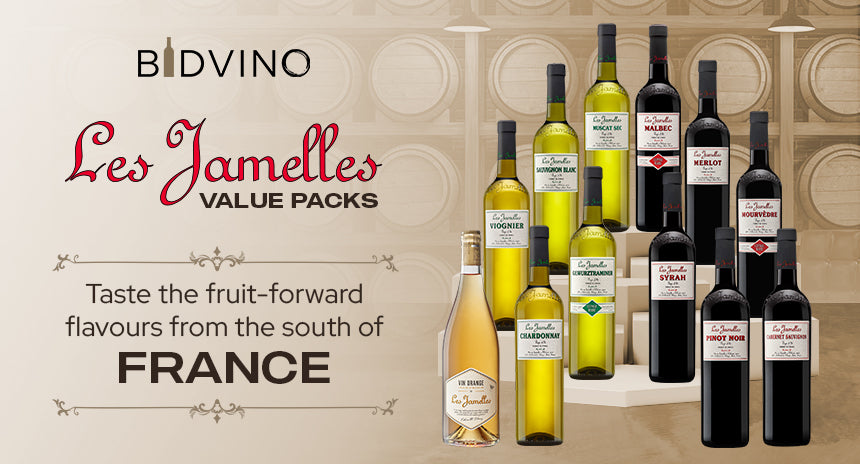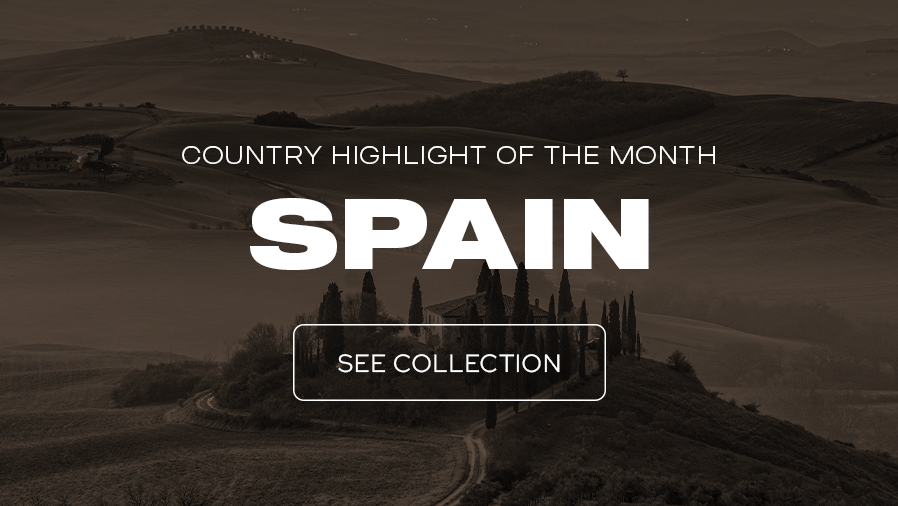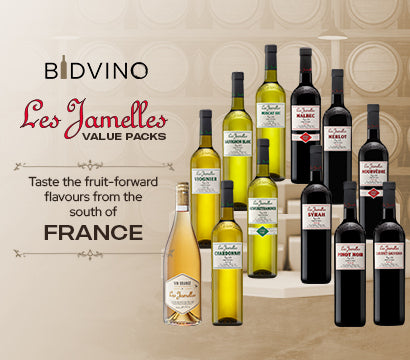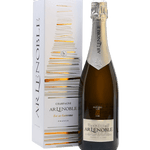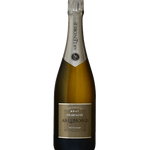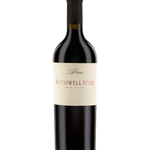You have no items in your shopping cart.
Red Wine Styles Explained: A Comprehensive Guide

Red wine is one of the most cherished alcoholic beverages worldwide, celebrated for its depth, complexity, and variety of flavors. Whether you're a casual wine drinker or a seasoned connoisseur, understanding the different red wine styles can significantly enhance your wine experience.
In this guide, we will explore the key red wine styles, examining their characteristics, flavor profiles, and the best occasions to enjoy them. With the right knowledge, you can confidently select the perfect bottle of wine to complement any meal or gathering.
What Defines a Red Wine Style?
A red wine’s style is determined by several factors, each contributing to its unique characteristics. The main factors include:
- Grape Variety: The specific grape used plays a significant role in shaping the wine’s flavor, aroma, and texture. Some grapes produce light, fruity wines, while others create rich, full-bodied reds.
- Climate: The growing environment, whether a warm, sunny region or a cooler, temperate area, affects how the grapes ripen and the wine's overall profile. For example, wines from warm climates tend to be richer and more robust, while cooler climates produce wines with more acidity and delicate aromas.
- Winemaking Techniques: Techniques such as fermentation, maceration, aging, and blending can all shape the final product. Different styles of winemaking can extract varying levels of tannins, color, and flavor from the grapes.
- Terroir: This term refers to the combination of soil, climate, and geography of a vineyard. Terroir plays a crucial role in shaping the taste of the wine, as the environment affects how grapes develop.
The 4 Major Red Wine Styles
Red wines come in a variety of styles, each offering distinct experiences. The primary categories of red wine style can be divided into four main groups: light-bodied, medium-bodied, full-bodied, and fortified wines.
-
Light-Bodied Red Wines (12% - 13.5% ABV)
Light-bodied red wines are generally more delicate, with lower alcohol content, lower tannin levels, and higher acidity. These wines are known for their bright fruit flavors and refreshing mouthfeel. They are often best served slightly chilled.
- Pinot Noir: One of the most celebrated red wine styles, Pinot Noir is renowned for its complexity and elegance. It typically features flavors of red berries (like cherry and raspberry) and subtle earthy undertones. Known for its lower tannin levels, it’s an excellent choice for wine beginners. Commonly grown in cooler climates, such as Burgundy, Oregon, and New Zealand, Pinot Noir can vary from delicate to more robust depending on the region.
Food Pairing: This wine pairs wonderfully with lighter meats such as grilled salmon, roasted chicken, turkey, and dishes with earthy flavors like mushrooms and truffles.
- Gamay (Beaujolais): Known primarily for its role in Beaujolais wines, Gamay is another light-bodied red that is highly fruit-forward and easy to drink. It offers flavors of strawberry, cherry, and banana, with a slight floral nose. Beaujolais Nouveau, made from this grape, is often released shortly after harvest and is meant to be consumed young
Food Pairing: Excellent with poultry, fresh salads, roasted vegetables, and charcuterie boards.
- Grenache (Garnacha): Originating in Spain, Grenache produces a light red with fruity flavors of strawberry, raspberry, and subtle spice. It is often used in blends, but when made as a single varietal, it offers a vibrant and fresh profile.
Food Pairing: Great with grilled meats, Mediterranean dishes, and vegetables, as well as pizza.
2. Medium-Bodied Red Wines (13% - 14% ABV)
Medium-bodied red wines offer a balanced profile with moderate tannins, acidity, and fruit flavors. These wines are versatile and generally more approachable, making them suitable for various occasions.
- Merlot: Merlot is one of the most popular red wine styles worldwide due to its smooth, approachable nature. It has a rich flavor profile with notes of plum, black cherry, and chocolate. Known for its soft tannins, Merlot is a great wine for those who prefer a less tannic experience compared to fuller reds like Cabernet Sauvignon.
Food Pairing: Pairs well with roasted meats, lamb, pasta with tomato-based sauces, and soft cheeses.
- Zinfandel: A bold and spicy variety, Zinfandel is known for its ripe fruit flavors of blackberry and plum, often with a peppery kick. It can vary from medium to full-bodied, with a distinctive zesty acidity that makes it ideal for pairing with bold foods.
Food Pairing: Works wonderfully with BBQ dishes, burgers, spicy sausage, and dishes like chili or jambalaya.
- Sangiovese: The dominant grape in Italy’s Chianti wines, Sangiovese has flavors of cherry, tomato, and herbs, often accompanied by a slightly herbal or earthy aroma. This medium-bodied wine is perfect for those who enjoy a bit of acidity in their reds.
Food Pairing: Pairs excellently with pasta, pizza, and roasted meats. Its acidity works well with tomato-based sauces.
3. Full-Bodied Red Wines (14.5% - 15% ABV and higher)
Full-bodied red wines are bold, rich, and often intense. These wines typically have higher alcohol content, elevated tannins, and a fuller mouthfeel. They are perfect for those who enjoy deep, powerful wines that leave a lasting impression.
- Cabernet Sauvignon: One of the most famous red wine styles, Cabernet Sauvignon is characterized by bold flavors of blackcurrant, tobacco, and sometimes green bell pepper. Known for its strong tannins, this wine has excellent aging potential and pairs wonderfully with rich foods.
Food Pairing: Perfect for pairing with red meats like steak, lamb, and barbecued ribs, as well as hearty stews and aged cheeses.
- Syrah/Shiraz: Known for its spiciness and bold flavors, Syrah (or Shiraz, depending on the region) has deep fruit notes of blackberry, plum, and black pepper. Syrah wines from cooler climates like France's Northern Rhône are known for their more peppery character, while those from warmer regions like Australia are typically fruitier and more intense.
Food Pairing: Ideal for pairing with grilled meats, smoked meats, and rich, spicy dishes like barbecue or curries.
- Malbec: Originally from France, Malbec has become a flagship grape of Argentina. With flavors of dark fruits, leather, and tobacco, this full-bodied wine is rich and juicy, yet smooth, making it a favorite for those who enjoy intense flavors without excessive tannin.
Food Pairing: Pairs excellently with grilled steaks, burgers, and charred meats.
4. Fortified Red Wines (16% - 20% ABV)
Fortified wines are those that have distilled spirits (typically brandy) added during fermentation, increasing the alcohol content. These wines are often sweeter and richer than typical red wines, making them ideal for sipping or dessert pairings.
- Port Wine: Port is a classic fortified wine from Portugal, usually rich, sweet, and full-bodied, with a higher ABV ranging from 16% to 20%. There are different types of Port, including Ruby, Tawny, and Vintage, each offering varying degrees of sweetness and complexity.
Food Pairing: Pairs wonderfully with dark chocolate, blue cheese, and dried fruits.
- Madeira: A fortified wine from the Portuguese island of Madeira, known for its high acidity and complex flavors of caramel, nuts, and dried fruit. Madeira is aged under extreme conditions, which gives it a distinctive profile.
Food Pairing: Great with nuts, blue cheeses, and rich desserts like chocolate cakes.

Red Wine Regions and Their Influence on Style
Where a wine is grown has a profound impact on its style. Wine regions across the globe offer diverse terroirs that contribute to the flavor profile of red wines.
- Bordeaux (France): Bordeaux is famous for its Cabernet Sauvignon, Merlot, and Cabernet Franc blends, producing wines with structured tannins, deep flavors, and excellent aging potential. These wines are often complex, with earthy, herbal, and fruity notes.
- Burgundy (France): Burgundy is the home of Pinot Noir, producing wines that are elegant, light-bodied, and rich in red fruit flavors. These wines often have a more earthy or floral character, and the region’s cool climate contributes to their high acidity.
- Napa Valley (USA): Napa Valley is a renowned wine-growing region in California known for its Cabernet Sauvignon and Merlot wines. The warm climate and long growing seasons allow the grapes to ripen fully, resulting in rich, full-bodied wines with high alcohol content.
- Barossa Valley (Australia): Known for Shiraz, Barossa Valley produces wines that are bold, full-bodied, and often spicy, with dark fruit flavors and a strong tannic structure. The warm climate here promotes the development of concentrated flavors.
- Mendoza (Argentina): Malbec thrives in Mendoza, producing wines that are fruit-forward, smooth, and packed with deep flavors. The region’s high-altitude vineyards contribute to wines with bright acidity and excellent freshness.
Conclusion
Red wines come in a stunning range of styles, from delicate Pinot Noir to bold Cabernet Sauvignon, each with its own unique flavor profile. Whether you're looking for a light and refreshing wine for a summer evening or a full-bodied bottle to complement a rich dinner, understanding red wine styles helps you select the right wine for every occasion.
By exploring different regions, varietals, and winemaking techniques, you'll discover new and exciting red wines to enjoy. Cheers to your next great wine adventure!
Frequently Asked Questions
1: What makes a red wine full-bodied?
A1: Full-bodied red wines have higher alcohol content, more tannins, and a rich, intense flavor. These wines are often deep in color and texture, with a powerful mouthfeel.
2: Can I serve red wine chilled?
A2: Yes, light-bodied reds like Pinot Noir are best served slightly chilled, while full-bodied reds are typically served at room temperature to allow the flavors to develop.
3: What is the best red wine for a beginner?
A3: If you’re new to red wine, start with light-bodied wines like Pinot Noir. This wine is fruit-forward, easy to drink, and versatile in food pairings.
4: What’s the difference between Shiraz and Syrah?
A4: Syrah and Shiraz are the same grape, but the name changes depending on the region. Syrah is used in France, while Shiraz is used in Australia, where the style is typically fruitier and bolder.
